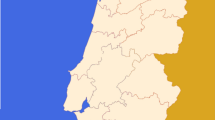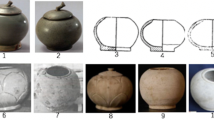Abstract
What has been learned from the detailed study of cargo material found on merchant shipwreck sites in Australia? Some extensive collections of shipwreck cargo material have resulted from archaeological excavations by maritime archaeologists over the past 30 years or so. Other collections have been created by SC UBA divers, primarily before the introduction of the Commonwealth (Federal) Historic Shipwrecks Act in 1976. Many of these have now been documented as a result of the 1993 amnesty. The relationship between cargo artifacts from archaeologically excavated shipwrecks and similar artifacts found on terrestrial historical archaeological sites is explored through a consideration of the meanings attached to these objects, suggesting ways that artifact studies focused on shipwreck cargo material can contribute to understandings of colonial societies, the nature of capitalism, and the rise of consumerism. It is argued that successful colonial settlement was only possible where there was a regular supply of suitable consumer goods for the newly arrived colonists.
Similar content being viewed by others
References
Brewer, John, and Roy Porter 1993 Consumption and the World of Goods. Routledge, London, England, UK.
English, Anthony J. 1990 Salted Meats from the Wreck of the William Salthouse: Archaeological Analysis of Nineteenth- Century Butchering Patterns. Australian Historical Archaeology 8:63–69.
Fielding, Kate 2003 A Pane in the Past: The Loch Ard Disaster and a Few Bits of Glass. The Bulletin of the Australasian Institute for Maritime Archaeology 27:1–8.
Hodder, Ian (EDITOR) 1989 The Meaning of Things: Material Culture and Symbolic Expression. One World Archaeology, No. 6. Harper Collins, London, England, UK.
Kenderdine, Sarah 1991 Artifacts from Shipwrecks in the South East 1851–1951. State Heritage Branch, Department of Environment and Planning, Adelaide, South Australia.
Kopytoff, Igor 1986 The Cultural Biography of Things: Commodification in Process. In The Social Life of Things: Commodities in Cultural Perspective, Arjun Appadurai, editor, pp. 64–91. Cambridge University Press, Cambridge, England, UK.
Lawrence, Susan 1998 The Role of Material Culture in Australasian Archaeology. Australasian Historical Archaeology 16:8–15.
McCracken, Grant 1988 Culture and Consumption: New Approaches to the Symbolic Character of Consumer Goods and Activities. Indiana University Press, Bloomington.
Morgan, Peter 1990 Glass Bottles from the William Salthouse: A Material Culture Analysis. Bachelor honours thesis, Department of Archaeology, La Trobe University, Melbourne, Australia.
Peters, S. Jane 1996 Archaeological Wines: Analysis and Interpretation of a Collection of Wines Recovered from the William Salthouse Shipwreck (1841). Australasian Historical Archaeology 14:63–68.
Stanbury, Myra 2003 The Barque Eglinton: Wrecked Western Australia 1852. Special Publication 13, Australasian Institute for Maritime Archaeology, Fremantle, WA.
Staniforth, Mark 1987 The Casks from the Wreck of the William Salthouse. Australian Historical Archaeology 5:21–28.
1991 The Maritime Archaeology of Immigration. The Bulletin of the Australian Institute for Maritime Archaeology 15(2):21–24.
1995 Dependent Colonies: The Importation of Material Culture into the Australian Colonies (1788–1850). In Underwater Archaeology: Proceedings from the Society for Underwater Archaeology Conference, Paul E. Johnston, editor, pp. 159–164. Washington, DC.
1996 Tracing Artifact Trajectories: Following Chinese Export Porcelain. The Bulletin of the Australian Institute for Maritime Archaeology 20(1):13–18.
1997 The Archaeology of the Event: The Annales School and Maritime Archaeology. In Underwater Archaeology Proceedings from the Society for Historical Archaeology Conference 1997, Denise A. Lakey, editor, pp. 159–164. Corpus Christi, TX.
1999 Dependent Colonies: The Importation of Material Culture and the Establishment of a Consumer Society in Australia before 1850. Doctoral thesis, Department of Archaeology, Flinders University, Adelaide, Australia.
2003 Material Culture and Consumer Society: Dependent Colonies in Colonial Australia. Kluwer Academic/ Plenum Press, New York, NY.
Staniforth, Mark, and Mike Nash 1998 Chinese Export Porcelain from the Wreck of the Sydney Cove (1797). Special Publication 12, Australian Institute for Maritime Archaeology.
Stuart, Iain 1991 Glass Bottles from the Loch Ard Shipwreck (1878): A Preliminary Study. Australian Historical Archaeology 9:31–36.
Weatherill, Lorna 1996 Consumer Behaviour and Material Culture in Britain 1660–1760. Routledge, London, England, UK.
Author information
Authors and Affiliations
Rights and permissions
About this article
Cite this article
Staniforth, M. Shipwreck Cargoes: Approaches to Material Culture in Australian Maritime Archaeology. Hist Arch 43, 95–100 (2009). https://doi.org/10.1007/BF03376763
Published:
Issue Date:
DOI: https://doi.org/10.1007/BF03376763




